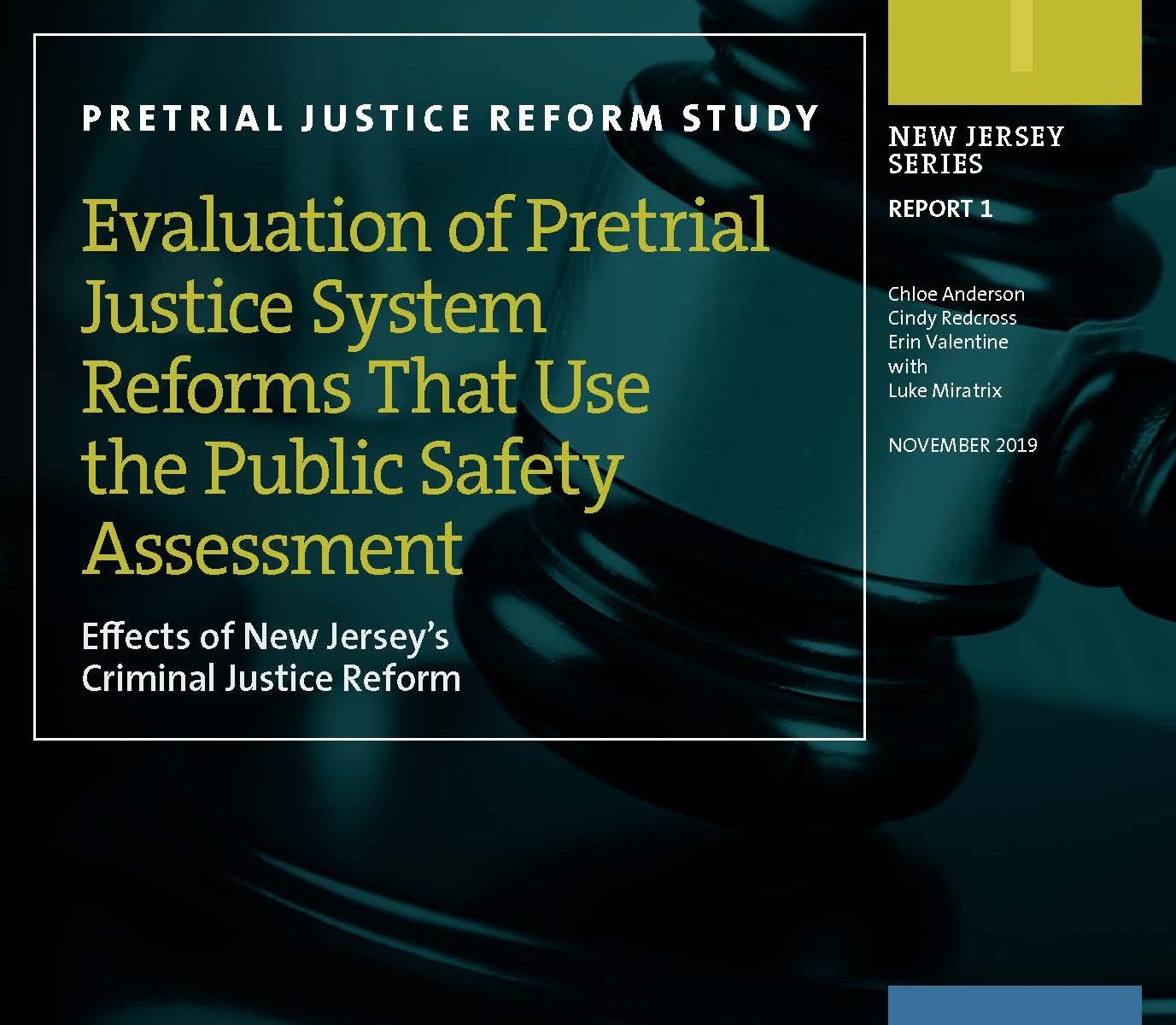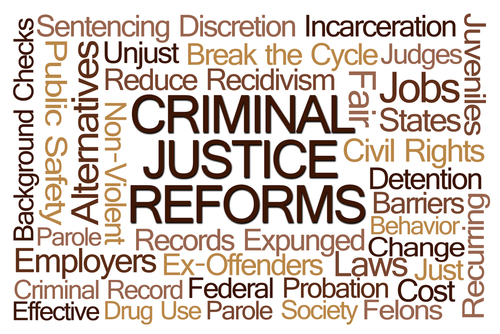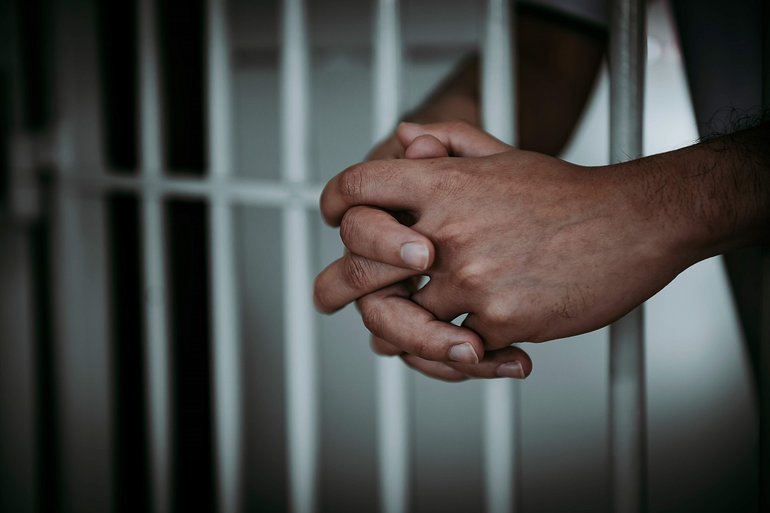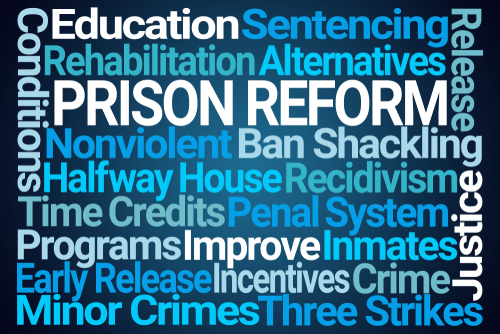Evaluation of Pretrial Justice System Reforms that use the Public Safety Assessment.
Gettin’ Out of Jail
Up to 88% of the people arrested in the city will be released without bail while their cases are pending under changes to the state’s criminal justice laws coming on Jan. 1, according to the state Office of Court Administration.
City Invests $391 Million in Communities and Comprehensive Reforms to the Criminal Justice System
For Inmates Released Under New Criminal Justice Reforms, ‘Every Day Counts’
Thousands of people were released from federal custody as part of the First Step Act. A few told us their stories.
Plan to Close Rikers Island Jail Complex Gets Key Approval
Local residents have expressed concerns, saying construction, traffic and tall buildings will harm their communities
Big Tech’s Newest Experiment in Criminal-Justice Reform
The unicorn start-up Slack is launching an apprenticeship program for formerly incarcerated people. But will the industry ever hire from the inside en masse?
America Has a Health-Care Crisis — in Prisons
America Has a Health-Care Crisis — in Prisons

Prison is no place to get sick. The nation’s incarcerated population is aging rapidly, with nearly four times as many inmates 55 or over as there were at the start of this century. That’s led to increased rates of diabetes and heart disease, among many other problems. Younger offenders are hardly the picture of health, given their high rates of addiction. Altogether, prisoners make up 1 percent of the population, yet they account for 35 percent of the nation’s total cases of hepatitis C. “They are the most expensive segment of the population,” says Marc Stern, a public health professor at the University of Washington, “and they are the sickest.”
For all the care that inmates need, they’re unlikely to receive adequate medical attention. Over the past dozen years or so, a majority of states have contracted out prison health care to private companies. The leading vendors have all been on the receiving end of hundreds of lawsuits. Some are frivolous, but some have led to multimillion-dollar judgments and court orders to change their practices. It’s a problem that could get worse.
Horror stories of needless deaths abound. From Arizona to Florida, prisoners with cancer have been treated with nothing more than Tylenol. A recent Columbia University study found that 97 percent of inmates with hepatitis C do not receive the expensive medication they need. Inmates routinely have to complain of the same symptoms multiple times before they even get to see a doctor, sometimes waiting weeks. There’s no doubt that prisoners have faked illnesses, and escape attempts during medical transfers to hospitals are a real problem. But too often the default attitude among guards and other staff is that inmates are lying about being sick, says Susan Lawrence, a physician and attorney who has worked in prisons.
Lawrence once had a patient in prison with liver cancer. Staff videotaped him working out in the yard to prove he was a fraud. He died a month after she was finally able to treat him. “The man had had rectal bleeding over a year. It was never taken seriously,” Lawrence says. “They didn’t understand how you can still function with metastasis. ‘How bad could it be? He’s working out. How can he have terminal cancer?’”
States often pay private companies on a per-inmate, per-day basis. That creates an incentive to cut costs. The market forces that discipline private providers on the outside, however, don’t apply in prison. There is no consumer choice. An inmate who doesn’t think medical treatment is up to par can’t switch to another prison, let alone a different hospital. And if the state, not the prisoner, is the customer, state officials don’t always know what they’re getting. Record-keeping is notoriously poor, and in some states, the department of corrections doesn’t even receive annual reports from its vendors.
When prison health care was first privatized in a major way, there was little reliable actuarial data, so it wasn’t clear what a reasonable price structure would look like. Over time, governments figured that information out and started writing better contracts, but that led to shrinking profit margins for vendors.
There have been other stresses on the business model. What was a growth area a decade ago is now stagnant. The state systems and large jails that are likely to privatize have already done so. With few new contracts out for bidding, providers low-ball one another in order to get business. That leaves yet less money available for care.
There’s been considerable consolidation within the prison health-care field. At this point, there are three major players — Corizon Health, Centurion Managed Care and Wexford Health Sources. States unhappy with their services don’t have many other places to turn. In December, Maryland gave its business to Corizon, having grown dissatisfied with Wexford. A few months later, Corizon was replaced by Centurion in Arizona. That state, which is embroiled in legal battles with a federal court about monitoring and performance measures in prison health, has now used all three companies. “It’s like a game of musical chairs, but there are only three chairs,” says David Fathi, director of the ACLU National Prison Project. “States tend to switch but they can pretty quickly run through all three.”
A change in contractors doesn’t necessarily lead to a change in care. Medical personnel often keep their jobs, particularly at remote rural facilities. The vendors co-opt each other’s staff and cannibalize each other’s business. None of that is good for care. It’s not clear, however, how many prison systems would be able to build their own medical teams back up, even if they wanted to. Having states provide health care themselves is no panacea anyway. Prison health care in California has been under receivership since 2006, when a federal court found that the state’s delivery of medical care did not meet constitutional standards. That’s why Stern, the public health professor, says, “if we focus on [the faults of] privatization, we’re not going to solve the problem.”
Some argue that prison health would improve if it were treated as part of the local community health safety net system. Communities are not immune to what happens inside their prisons, whether it’s opioid addiction or infectious disease. But most taxpayers on the outside don’t see prison health problems affecting their own well-being. The reality may be that treatment for those people society wants to punish will never become a top priority.
Originally Published by Alan Greenblatt in the August 2019 edition of Governing.
NYC Jail Admissions Down Almost 50% Since 2014 in Major Achievement for Criminal Justice Reform
The safest big city in the U.S. is on track to become the city with the fewest people in jail, reflecting a major achievement cor criminal justice reform, according to statistics shared by The Daily News.
New York City’s Latest Bail Reform Aims to Keep More Teens Out of Jail
Stop sending men to prison for addiction treatment, group recommends
Stop sending men to prison for addiction treatment, group recommends

A state advisory commission has recommended that the Legislature put an end to the practice of incarcerating men who are civilly committed for addiction treatment.
The nonbinding recommendation by the Section 35 Commission, released this week, may bolster proposed legislation requiring that those ordered into treatment receive care at a licensed facility. Meanwhile, the state is facing a lawsuit with the same goal.
The moves reflect the trend toward regarding addiction as a health problem rather than criminal or immoral behavior. Commission members heard from former patients who described the trauma of being locked up even though they had committed no crime.
“I want anyone with addiction to be treated in a health care facility, not a criminal justice facility,” said state Representative Ruth B. Balser, a Newton Democrat who served on the commission and also sponsored one of two bills that would carry out the recommendation.
If the Legislature takes the recommended action, it would effectively close down a decades-old and much-maligned program run by the Massachusetts Department of Correction, now located at a Plymouth prison.
It could also shutter a year-old program run by Hampden County Sheriff Nicholas Cocchi, which takes a different approach and has been widely praised. That prompted the lone negative vote, from state Representative Michael J. Finn, a West Springfield Democrat.
Finn said he didn’t object to closing the Plymouth prison facility, but considered it a wasteful mistake to shut down Cocchi’s well regarded program, which the state has already invested in building. “Correctional settings can be a part of the solution,” he said.
The 29-member commission, which included state officials, legislators, advocates, and addiction specialists, specified that if these prison-based programs are closed, an equal number of beds should be opened in other programs. It also called for expansion of “low-threshold, treatment-on-demand models” in which patients are provided immediate access to care, including medications.
The commission’s recommendations don’t seek to end the civil commitment process, but do call for limiting its use and studying its effectiveness.
“The thrust of this, and some of the other recommendations, is to be building a more robust system of care, to make it more accessible, so we don’t have to be sending people involuntarily,” Balser said.
Under Section 35 of Massachusetts law, a family member, police officer, physician, or court official may petition a judge to force a person addicted to drugs or alcohol to go to treatment if the person is likely to harm themselves or someone else. Some 6,000 people a year are ordered into treatment through this process and can be held against their will for as long as 90 days.
The Legislature voted to end the practice of incarcerating women under Section 35 in 2016 but has continued to allow it for men. All women and some men who are civilly committed get sent to treatment facilities; but the majority of men end up in a program run by correctional officials.
Many states have laws allowing forced addiction treatment, but Massachusetts courts resort to it much more frequently than most other states. And Massachusetts is the only state that sends men so committed into correctional settings.
Section 35 has long been seen as a last resort for people who couldn’t get help elsewhere. When a proposal to shut down the prison-based program was floated in 2009, parents streamed to the State House in protest, saying it was needed to prevent young people impaired by addiction from dying in the streets.
But in recent years, the state has vastly expanded treatment programs and supported efforts to make it easier for patients to connect with care.
And there is very little data on the effectiveness of involuntary treatment.
Mark Larsen, director of mental health litigation for the Committee for Public Counsel Services, which provides lawyers for those needing legal representation, said that a significant portion of people committed to treatment don’t object to the proceeding. Some have even asked a relative to have them committed. Yet even these people are often treated as criminals, he said.
The commission favored narrowing the Section 35 law so it can’t be used in cases where people are willing to go to treatment and would apply only when the person is in danger of harms “above and beyond the harms that are routinely attendant upon the abuse of substances, such as death by overdose.”
Cocchi, the Hampden County sheriff, said the commission is taking a hard-line position against all jail-based programs without considering quality or regional needs. Before he opened his program, there were no Section 35 beds in Western Massachusetts, forcing patients from the region to travel hours in a police van to facilities in the eastern part of the state.
For a little over a year, Cocchi has run two Section 35 facilities: an 85-bed detox in Ludlow, which is locked, and an unlocked 32-bed unit in Springfield that offers longer-term therapy after detox.
“We don’t treat any clients like inmates,” Cocchi said. “They are not cuffed. They are not shackled. They’re not strip searched.”
The program employs addiction professionals who are in recovery themselves, includes a mental health unit, connects patients to services upon discharge, and even offers visits by a therapy dog.
Of the 770 people admitted to Cocchi’s program, only 21 left without completing treatment and only 39 were committed a second time — a record Cocchi called dramatically better than the Section 35 facilities overseen by the Department of Public Health.
“The guys in Hampden, they’re doing a very good job, they’ve got a very good program,” said state Senator Cindy F. Friedman, a Democrat from the Fourth Middlesex District and commission member. But, she said, “It’s still in a jail. It just doesn’t compute.”
Balser, the Newton legislator, said she regrets that one voice remained unheard in the discussions: that of the Baker administration. Because of the lawsuit, the four members of the executive branch who served on the commission were required to abstain from opining or voting.










